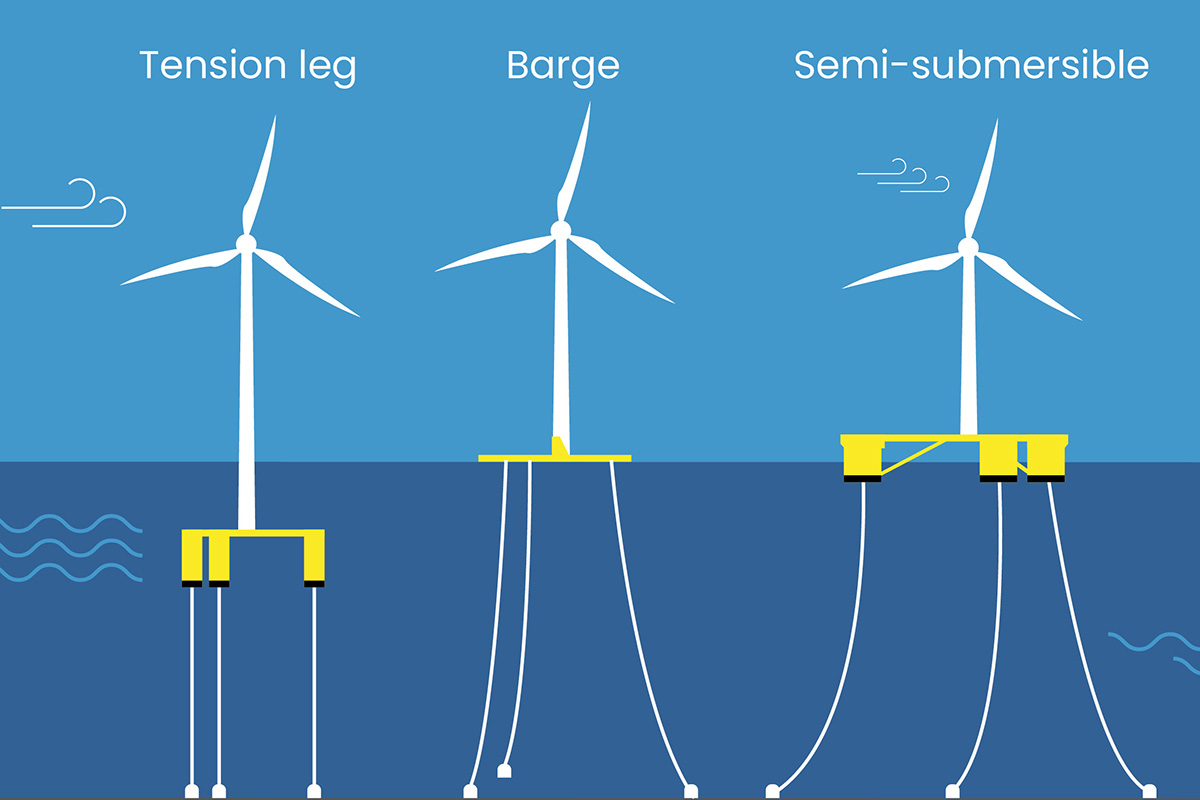The developers of a new wind farm in the Celtic Sea, still in the early stages of planning, confirmed last week the start of a consultation process that they hope will help pinpoint the most suitable location for it, reports Andy Read.
The Gwynt Glas wind farm is expected to generate around 1GW of power, enough for over 900,000 homes, and a quarter of the total long-term government target for renewable power production in the Celtic Sea.
Providing detailed information to Fishing News, after having already undertaken a survey of fishing activities in and around the proposed search area, a spokesperson for the developers said: “There is no fixed place defined yet for the turbines.
Our overarching objective is to identify a viable site for Gwynt Glas whilst minimising impacts on the environment and sea users.”
Gwynt Glas is Welsh for ‘Blue Wind’. The wider site search area, of over 1,500km2, is 70km off the coast of Pembrokeshire and 45km from the North Cornwall coast, spanning both Welsh and English waters.
The developers have appointed a dedicated liaison team, through contractor Natural Power. The team is led by fisheries liaison officer (FLO) Peter Berney, who has carried out the role of company FLO for a number of offshore wind projects over the last five years.
Natural Power has already undertaken an initial evaluation of commercial fisheries in the area, which has led to the distribution of the first Gwynt Glas consultation leaflet to the fisheries interests identified.
The spokesperson for the developers asked any Fishing News readers with an interest in the area, who has not already been contacted by them, or is not in receipt of the initial invitation, to contact them directly.
They said: “We have recently shared our information leaflet with fisheries representatives in Wales and the South West to capture initial feedback. The Gwynt Glas team wish to hold open drop-in sessions to provide people with the opportunity to find out more about the Gwynt Glas project in-person.
“We would like to encourage those interested to get in touch with the project team to discuss the proposals in more detail. We welcome everyone’s views, and look forward to receiving input at this early stage in the project development, and hope to see people at one of our in-person events.
“Indicative turbine spacings and mooring designs will be developed throughout 2022 and 2023, alongside the findings of the site selection process, to inform our planned tender submission to the Crown Estate.”
Nancy McLean, Gwynt Glas project director, in a wider press release on the initial consultation said: “In announcing the site search area at this stage, we are keen to get an early understanding of the current level and type of fishing activity in the area.
“We are inviting those involved in fisheries to respond to our consultation and to meet us to discuss the opportunities and potential challenges.”

Depending on feedback during consultations, there is the possibility that one of three designs of floating turbine will be proposed for the farm. Designs of this type allow turbines to be sited in deeper water than with the fixed-pile designs that will be familiar to fishermen in existing wind power developments.
Welsh fishers: concern about bigger picture
Jim Evans of the Welsh Fishermen’s Association, whilst acknowledging the proactive approach being taken for the site, shared wider industry concerns with Fishing News, saying: “We have been in contact with the developers and are fully aware of their early plans, and willingness to engage.
“Given the threat to livelihoods we are seeing from combined spatial squeeze, we really hope that the authorities can see the bigger picture, with the Joint Fisheries Statement taking more into account about the combined impact of wind development, MPAs and fuel prices on fishermen.
“There seems to be no plan within the JFS for mitigating the cumulative impact of these, which will put many of our boats out of business.
“A concern we have at the Welsh Fishermen’s Association is that fishermen are so worried about day to day survival, rather than what may happen to them in 2026, that they won’t engage with these developers, even if approached early. As an association, we seem to be endlessly fire-fighting – but we will work constructively with these developers to mitigate impacts on the fishing industry.
“We are meeting with the Crown Estate shortly to express our worries about overall spatial squeeze. We do acknowledge and welcome the early approach with respect to this site, but it is only one of many, and with a clear government policy to push offshore wind, for reasons that are perfectly understandable, we are looking to see some support to prevent the industry dying the death of a thousand cuts.”
The current Crown Estate leasing round process could see rights awarded to developers by the end of 2023. If successful, an Environmental Impact Assessment will subsequently be undertaken, and an application for consent will be submitted for approval. This is anticipated to be submitted in 2025 or 2026, with construction starting in the late 2020s.
The government is currently undertaking the Offshore Transmission Network Review – a review of the connections between wind farms and landfall locations, designed to minimise the impact of cables from the different offshore developments.
As such, it is expected that Gwynt Glas will not require an export cable route to a landfall point, but will instead connect to a central transmission point.
The Gwynt Glas team can be contacted at: Gwynt.Glas.FLO@naturalpower.com or by phone on: 07391 40 2387.
This story was taken from the latest issue of Fishing News. For more up-to-date and in-depth reports on the UK and Irish commercial fishing sector, subscribe to Fishing News here or buy the latest single issue for just £3.30 here.






